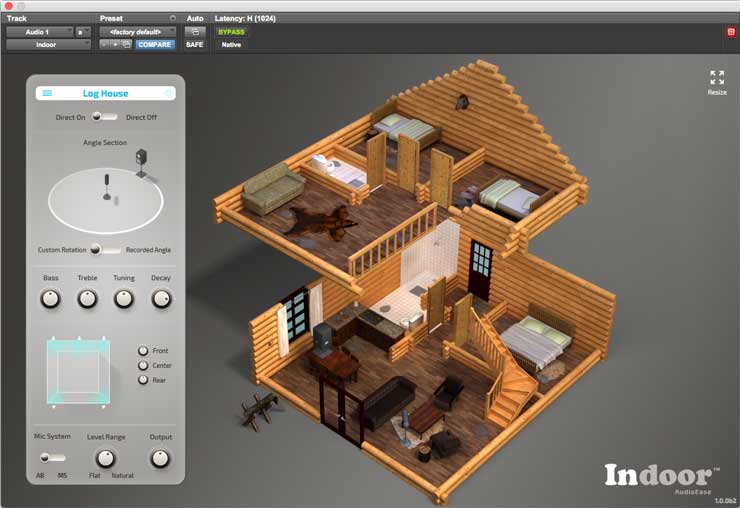
Ease Acoustic Software Crackers

But in a study published in the journal Gastroenterology, about 3 out of 4 people with IBS had their symptoms ease right away after starting a low-FODMAP diet and felt the most relief after 7 days.
Large-volume cubic high-pressure apparatus is commonly used to produce synthetic diamond. Due to the high pressure, high temperature and alternative stresses in practical production, cracks often occur in the carbide anvil, thereby resulting in significant economic losses or even casualties. Conventional methods are unsuitable for crack detection of the carbide anvil.
This paper is concerned with acoustic emission-based crack detection of carbide anvils, regarded as a pattern recognition problem; this is achieved using a microphone, with methods including sound pulse detection, feature extraction, feature optimization and classifier design. Through analyzing the characteristics of background noise, the cracked sound pulses are separated accurately from the originally continuous signal. Subsequently, three different kinds of features including a zero-crossing rate, sound pressure levels, and linear prediction cepstrum coefficients are presented for characterizing the cracked sound pulses. The original high-dimensional features are adaptively optimized using principal component analysis.
A hybrid framework of a support vector machine with k nearest neighbors is designed to recognize the cracked sound pulses. Finally, experiments are conducted in a practical diamond workshop to validate the feasibility and efficiency of the proposed method. Introduction Synthetic diamond has unique physical and chemical characteristics, such as hardness, semi-conductivity and high thermal conductivity []. In China, synthetic diamond is commonly produced by large-volume cubic high-pressure apparatus, which has three pairs of tungsten carbide anvils, as shown in. When the apparatus is in operation, it provides 5 GPa pressure and 1500 °C temperature, which is required for the growth of diamond through six hydraulic rams and electric heating mode []. Large-volume cubic high-pressure apparatus.
( a) Appearance; ( b) internal anvils. Nowadays, the total amount of cubic apparatuses has reached about 6000 in China. Due to the high pressure, high temperature and alternative stresses, the carbide anvil is highly prone to material fatigue. A common form of the failure is cracking, including nucleation, propagation and fragmentation. If the released energy is less than a critical value, the crack does not grow; otherwise, it grows spontaneously. When a cracked anvil is still operating, an unbalance force is exerted on the other five anvils. If not found early enough, it is extremely easy for a cracked carbide anvil to have a serious blowout or even cause casualties.
 The destruction of tungsten carbide anvils due to blowouts has become one of the most significant economic losses for the manufactures since the apparatuses have a value of 0.05 g/carat. Traditionally, regular maintenance and subsequent maintenance methods have been applied in synthetic diamond production. During downtime, the anvil is overhauled by observing or sweeping the surface with a saw blade. While in the production process, the currently available detection method is manual monitoring by experienced workers, seriously influenced by strong background noise. In conclusion, these methods lack the ability to accurately judge the state or analyze the health of the carbide anvil, thereby causing poor reliability and inaccuracy. To adequately protect the rest of the anvils prior to a blowout and improve the market competitiveness and production safety, conducting on-line crack detection of the tungsten carbide anvils is necessary.
The destruction of tungsten carbide anvils due to blowouts has become one of the most significant economic losses for the manufactures since the apparatuses have a value of 0.05 g/carat. Traditionally, regular maintenance and subsequent maintenance methods have been applied in synthetic diamond production. During downtime, the anvil is overhauled by observing or sweeping the surface with a saw blade. While in the production process, the currently available detection method is manual monitoring by experienced workers, seriously influenced by strong background noise. In conclusion, these methods lack the ability to accurately judge the state or analyze the health of the carbide anvil, thereby causing poor reliability and inaccuracy. To adequately protect the rest of the anvils prior to a blowout and improve the market competitiveness and production safety, conducting on-line crack detection of the tungsten carbide anvils is necessary.
When a crack occurs in the material, it results in a rapid release of energy, transmitting in the form of an elastic wave, namely acoustic emission (AE). The AE-based detection method has been intensively used in nondestructive assessments of cracks [,,,,,]. Caesarendra et al.
Proposed an AE-based method for low speed reversible slew bearings, including AE signal processing, feature extraction and pattern classification []. Rabiei and Modarres revealed a log-linear relationship between the AE features and crack growth rate, and presented an end-to-end approach for structural health management []. Presented a comparative study of the damage level diagnostics of gearbox tooth using AE and vibration measurements; the results indicated that vibration signals were easily affected by mechanical resonance, while the AE signals showed a more stable performance []. Studied defect detection of rails using AE and wavelet transform at a high speed []. In the above methods, the AE sensors are usually attached to the surface of the monitoring object.